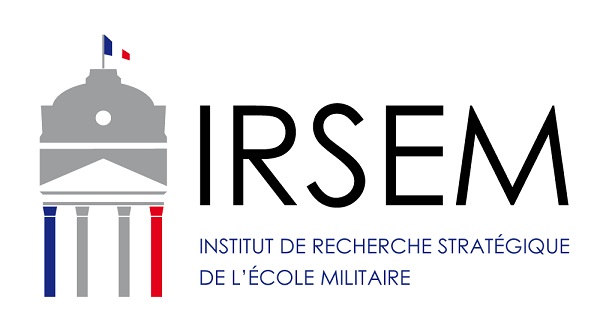Download Strategic Brief no. 46 - 2022
The (new) race to the Moon : initially symbolic, lunar conquest has acquired a strategic, territorial dimension
C.P.T Béatrice Hainaut
Current lunar conquest efforts differ from those of the Cold War years due to the desire of the actors to establish a permanent lunar presence. These efforts are led mainly by the United States and China, along with private actors. This poses strategic, legal and normative problems.
The United States planted its flag on the Moon on 21st July 1969, the culmination of a contest between two superpowers that left its mark on the 20th century. Few people at the time interpreted this gesture as an act of appropriation of our natural satellite by a State, which was in any case prohibited by the Outer Space Treaty (1967). The conquest of the Moon was more symbolic than strategic or economic.
Nevertheless, the then space powers had an intuition that prevented them from ratifying the Moon Agreement (1979). The latter provides that the Moon and its natural resources constitute the common heritage of mankind and that, as such, an international regime should be established to govern the exploitation of such resources when such exploitation is about to become feasible. Today, this non-ratification takes on its full meaning. There are an increasing number of programs to return to the Moon and settle there for the longer term. This race is taking place against a backdrop of fierce strategic and economic competition between the United States and China. Beyond these two major players, the Moon has become an international issue.
Since 1972, the Moon had been left outside the competition between the powers. It was not until 2004 that U.S. President George W. Bush Junior entrusted NASA with the task of putting astronauts on the Moon in 2018 and preparing the manned mission to Mars. For the United States, ensuring a preeminent position on Earth’s natural satellite is a strategic choice. This return to the Moon was part of NASA’s broader Constellation program for the future of human spaceflight. However, in 2010, Barack Obama decided to stop the lunar program after reading the report of the Augustine Commission, which highlighted the unsustainability of the project. Highly criticized, the American president later went back on the outright cancellation of the program and granted the necessary budget for the development of a heavy launcher, Space Launch System (SLS), capable of carrying a capsule (Orion) with astronauts on board. The objective was to reach the International Space Station (ISS), the Moon and then Mars.
For his part, President Trump directed NASA to work toward sending astronauts to the Moon in 2024 for “long-term exploration and use,” to be followed by manned flights to Mars and other destinations. The Artemis program was launched. It aims to allow the United States to resume manned flights to the Moon, including the first woman and the first person of color. The project to create a space station as a gateway to the Moon, is an international, commercial project. SpaceX is playing a major role, designing the spacecraft that will land astronauts on the Moon: the Starship. Other private companies will potentially be involved in future flights to the Moon. Contrary to space exploration in the 20th century, the United States does not wish to make this new lunar conquest a purely government project.
This return to the Moon is accompanied by hopes of commercial exploitation. A political decision and national legislations make this possible. In 2015, the American president ratified the Obama Space Act, which authorizes the exploitation of space resources by private companies. Other States followed suit, such as the United Arab Emirates and Luxembourg, which adopted similar national legislation. The United States is trying to involve as many States as possible in its program. It has initiated the Artemis Accords, presented as a body of cooperative principles for the peaceful exploration and use of the Moon, Mars, comets and asteroids. France signed these agreements on 7th June 2022, joining 20 other States. The extraction and use of space resources are clearly authorized (§10).
To prevent interference (§11), the agreements establish temporary “safety zones”. The choice of words is important. The term safety reflects the idea that, despite the presence of several actors on the Moon, the integrity of the installations, equipment, etc. must be preserved by regulating the activities of each party. These safety zones follow directly from the “exclusion zones” mentioned in 2011 by NASA. This recommendation aims to avoid damage to existing equipment by new arrivals on the Moon, as the lunar dust raised during spacecraft maneuvers can have a particularly aggressive impact on equipment. Had the term security been used, it would have referred to verification and control measures to protect activities from hostile acts.
The fact remains that, although the safety zones are presented as temporary, this principle is already a point of friction between States. Some of them consider that it is contrary to existing norms. They fear territorialization, and thus an appropriation of the Moon in all but name, although such action is banned by space law. This feeling is reinforced by the announcement of the creation of permanent or long-term installations which de facto contradict the principle of non-appropriation. Nevertheless, some specialists believe that the establishment of safety zones could constitute a response to Article 9 of the Space Treaty, which allows for interState consultations when the activity of one State interferes with that of another.
Notwithstanding this argument, the Artemis Accords risk creating further dissension between the United States and China, which also has lofty lunar ambitions. It wants to land its taikonauts on the Moon in 2035. China has demonstrated its technological capabilities by sending a series of “Chang’e” lunar probes and landers since 2007. The most publicized event, as it was a world first, was the landing of Chang’e 4 on the far side of the Moon in 2019. The Chinese project of a long-term presence on the Moon via a lunar base is being pursued in partnership with Russia. This project is also open to international cooperation, but is clearly in competition with the Artemis program.
Moreover, competition will arise concerning the place chosen by each of the protagonists to land and install their lunar base. At present, both the United States and China are aiming for the South Pole. In the current state of knowledge, the choices are limited. The ideal location for a lunar base requires both proximity to water and mineral resources that can be mined, and exposure to sunlight. At the same time, a host of private actors are also preparing to land on the Moon and exploit the resources there.
Who will be the competent authority to manage conflicts on the Moon? How will it be possible to verify, at a distance of more than 350,000 km from the Earth, that the peaceful use of the Moon is a reality and that no military activity is taking place there, in accordance with the Outer Space Treaty? Who will be able to carry out on-site verifications?
At the international level, examination of these new issues is ongoing. The Legal Subcommittee of the Committee on the Peaceful Uses of Outer Space (COPUOS) has decided to set up a working group on the legal aspects of activities relating to space resources. The publication of its final report is scheduled for 2027.
Captain Béatrice Hainaut holds a doctorate in political science and international relations from the University of Paris-Panthéon-Assas and is a researcher on space issues at IRSEM.
Contact: beatrice.hainaut@irsem.fr



